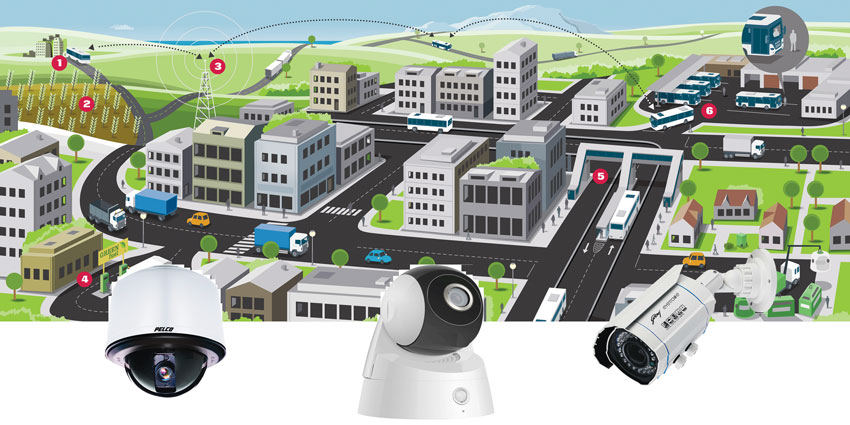
A more proactive adoption and awareness of security solutions among all the stakeholders has to be achieved, finds out Syed E. Hasan.
A 'smart city' is an urban region that is highly advanced in terms of overall infrastructure, sustainable real estate, communications, and market viability, with information technology as the principal infrastructure as the basis for providing essential services to residents. Besides, there are many technological platforms involved, including but not limited to automated sensor networks and data centres. In a smart city, economic development and activity is sustainable and rationally incremental by virtue of being based on success-oriented market drivers such as supply and demand, benefiting everybody, including citizens, businesses, the government, and the environment. Though this may sound futuristic, it is now likely to become a reality as the 'smart cities' movement unfolds in India.
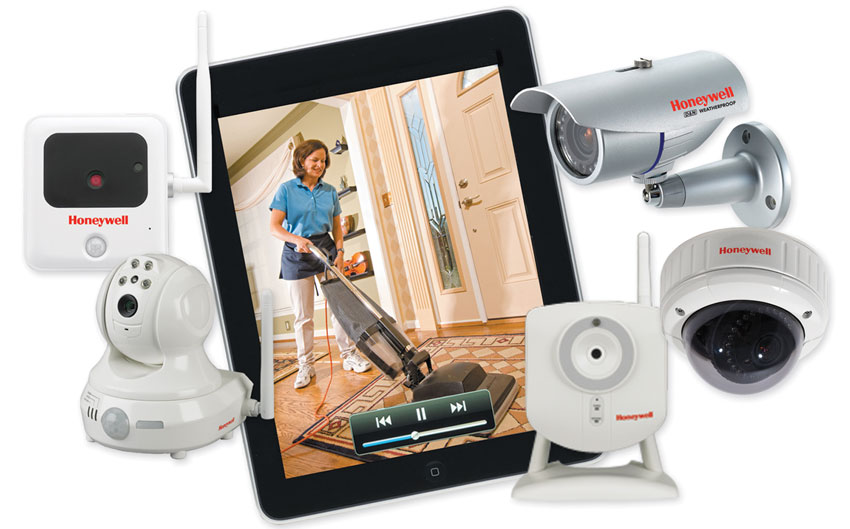
India flags off its ambitious '100 Smart Cities' project, when it recently issued the list of 98 cities, and thus the likely problems of accommodating Rurban migration seem to be tackled comparatively easily. But has this been the only reason? Not at all! It is also a forced development keeping in view the rapidly depleting natural resources besides, the emerging neo-middle class with aspirations of better and secure living, which apparently is impossible to fit in the existing city structure. Here comes the need to recast the urban landscape in the form of smart cities that would be efficient, safe, and secure so as to abide the burgeoning population.
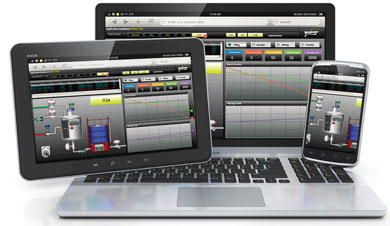
Since, smart cities will comprise buildings specifically designed to accommodate advanced technology, planning will become vital to address safety and security needs of the inhabitants. Video surveillance, fire alarms & protection, access control, intrusion alarm, and emergency evacuation systems are some of the important components, which the concerned agencies need to have planned properly for effective and efficient monitoring.
Though, we have been witnessing the use of video surveillance technology since long, but its usage has so far been sporadic and unsatisfactory in most of the instances. But now it is smart; there are myriad applications that the video surveillance system can be employed for. It operates round the clock, being monitored constantly, keep waiting for an impulse to start recording, and/or sending an alarm to the operator, automatically. The data thus collected can be used for innumerable purposes through video analytics. Also, these systems can integrate information with other applications, creating new benefits. What's more, with the smart cities' call, the application and importance of video surveillance will move from just security to tracking, monitoring, crime-control, disaster-prevention, among many such other concerns to be tackled.
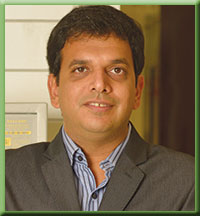

Delving into the basics, a smart city utilises information, communication and technology (ICT) to inter-connect various technologies and optimise delivery of smart services like traffic, utilities, surveillance etc. To achieve this, a smooth but robust communications infrastructure has to be designed to avoid common points of failure. No doubt that the smart city project is the much needed platform for economic growth and innovation, but at the same time, it also attracts wrongdoers, right from petty criminals to lethal terrorist attacks. Therefore, it is important for a city to be equipped with monitoring mechanisms and safety systems like IP-based video surveillance.
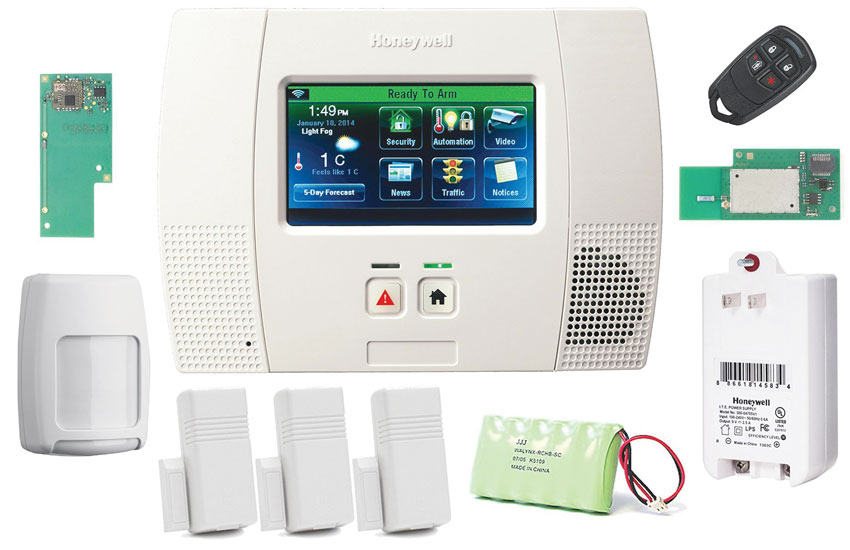
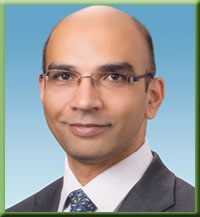
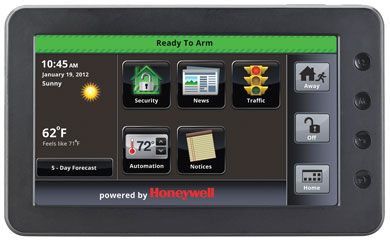
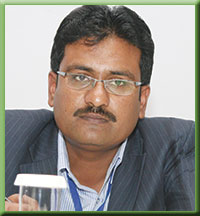
Attributes like innovative analytical tools, advanced sensor technology, and artificial intelligence can be added to both existing and new surveillance installations. These tools can help in crowd monitoring/detection, traffic management, criminal identification, and also reduce cases of people breaking the law by informing the concerned authorities to take preventive or necessary actions. For example: A traffic light violation can be caught on camera and sent to the concerned officials, who in turn can present the proof to the violator. Clearly, technology has a key role in making cities smart with its solutions for efficient management and integration of a city's various operating systems.
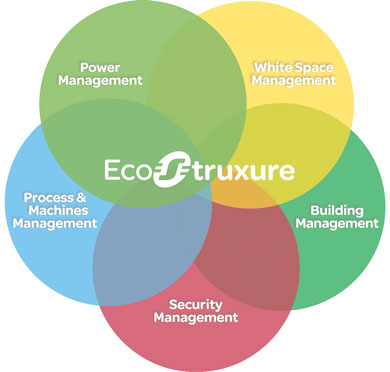
Godrej Security solutions include a range of Eye-trace CCTV and DVRs crafted for different needs and specifications. The remote surveillance system helps to accurately monitor the premises and provides the occupant the ability to transmit pre/post alarm videos to the monitoring stations. It also offers VigiGuard flap barriers and turnstiles that ensure security and crowd management. Beside these, for perimeter security, the company has electro-fencing, chain link fencing, electro hydraulic blocker, and concertina fencing. To safeguard against fire and burglary, we offer a range of solutions such as the Fi Warn advanced fire alerting systems with loop powered intelligent addressable detectors and devices and is suitable for both SMBs and large enterprises," shares Mr. Pithawalla.
Interestingly, while quite a few companies are vying to cater to the requirements of smart cities', Honeywell claims to have already delivered its first city surveillance project in Bhubaneswar, Odisha, one of India's first three proposed smart cities. "This city surveillance system is one of its kind in the entire state, and has been successful in bringing about collaboration of the best tools of technology to aid day-to-day policing," asserts Mr. Singh adding that the surveillance system includes integrated CCTV, automatic number plate reading cameras (ANPR), and a command & control center-operated out of the Police Commissioner's office. It has advanced video analytics to alert police about traffic violations and abandoned objects supported by 113 Fixed IP and PTZ Honeywell Cameras on Honeywell DVM platform along with 99 PCR vans on Honeywell Cameras and Mobile DVR.
He informs that as of now Honeywell products and solutions are operational in 150 million homes, 10 million buildings, and hundreds of gas and electric utilities worldwide, giving customers the ability to capture more and better data faster and across a wireless landscape, improve productivity, safety, and security, drive better decision making, and reduce costs. "More than 50% of Honeywell's portfolio is linked to energy-efficiency and can help buildings cut their energy consumption by up to 25%," avers Mr. Singh, who informs that the company has a few notable projects completed under its banner including Delhi Airport, Kolkata Airport, Wankhade Stadium, Delhi Metro Station, Jamnagar Refinery, etc.
The latest addition in Honeywell's portfolio of security solutions is its Command and Control Suite (CCS) which makes a building better and smarter. "CCS turns complex facility data into recommendations and easy-to-implement changes that help boost business outcomes — lowering costs, minimizing risk and reducing downtime. By combining intelligent automation, advanced analytics and visualization with the simplified user experience of today's home and mobile electronics, CCS links building automation and the enterprise. It can provide a holistic view of a connected building's video feeds, access control and fire alarms, for example, and pull in relevant information from human resource applications. Integrating data from these disparate systems could help security personnel track occupants and make sure they exit the facility in the event of an evacuation, improving employee safety," shares Mr. Singh.
Schneider Electric, one of the global leaders in management of Smart Cities, has helped develop concepts such as smart energy, smart water, smart integration, smart buildings, smart public services, and thus builds trust through deft management of constituents that are integral to the Smart City concept – a dream that India wants to translate into reality. "We, at Schneider, have the integration expertise, followed by world-class products to help reduce risk, mitigate liability, ensure business continuity, cut operating costs, and comply with government and insurance regulations for a future-proof business," explains Mr. Kadam, adding that the modern integrated security system is such that it can help putting a cap on the rapidly increasing instances of theft, burglary, and kidnapping among other such crimes. "For instance, mothers nowadays are very much concerned about their child's safety. A mother is quite eager to monitor her child's activities through a video surveillance system while the kid is outside the home in school or playground."
Schneider Electric's latest solution pertaining to smart city security include its Command Control Centre (3Cs) that acts as a centralised meeting point for all services – from communications and surveillance to observation – and allows users to integrate, manage, and maintain all operations from a single point. The 3Cs solution achieves smart city goals of operational efficiency, higher resilience, quicker response and improved customer satisfaction in one integrated system. Another key addition in Schneider's bouquet is Wonderware, an integrated system platform, which enables production and industrial operations to synchronize with business objectives and achieve speed, flexibility as well as sustained profitability. Wonderware software delivers significant cost benefits for designing, building, deploying and maintaining robust applications for manufacturing and infrastructure operations.
No doubt that a smart city with connected solutions, which is able to listen and understand what is happening in the city, and also make better decisions, is what most of us incur out of the concept. But to make the dream of smart city come true, we need to have developed a kind of understanding not only towards the concept but also the products and solutions. We need to learn the skill to communicate with these highly technical and advanced tools. This can only be met with the use of advanced analytical techniques in real time, which allows one to create a kind of awareness and understanding about the city that undoubtedly improves the services being provided.
Lack of awareness about the modern security system has continuously been hampering the growth of the industry. "Developing smart buildings, in turn setting up of smart cities requires the support, commitment, and involvement of a variety of public and private stakeholders like developers, owners, operators, and users. And if any of them, at any time, fail to understand the digital nuances, the outcome will be different than expected, and may even get deteriorated. So, the challenges are lack of awareness and absence of policies to incentivise smart building stakeholders. Besides, there is a continuous need for training and educating the stakeholders about technology innovation in this space," adds Mr. Singh.
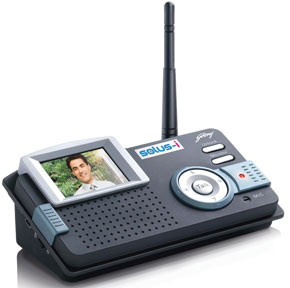
According to Mr. Pithawalla, a large number of industry specialists, specific to premises' security in the B2B space, cover fire safety, access control, as well as surveillance. These specifiers help keep customers updated with the latest trends in the security market as well as the importance of high-end security as against security installed only for mandatory reasons. "In the home segment while the influence of specifiers such as architects and interior designer is currently low, we have noted a promising uptick in the security space. We keep doing regular meets with specifiers from various industries. This helps us both, to maintain a good relationship with them and to keep them informed of the latest happenings at GSS," he says.
Mr. Kadam believes that spreading awareness to stakeholders as well as end users alike is the only way to take things to the next level. "We keep educating people through our Citizen Engagement Programme and thus help them learn what is smart and how to behave smarter. We demonstrate our products, and share details on the functioning of the same. We try letting them believe the fact that smart is what smart does, in order to bring them closure to the concept, and hence, solution. For that matter, to avail of smart facilities, the inhabitants should learn to behave smartly with smart systems else we can't expect things going the way we want. After all, cities have to be supermodels of efficiency, friendliness, and preparedness – on a mass scale. As populations migrate inexorably to urban agglomerations, cities need to visibly – and intelligently – equip themselves to face the increasing demands placed on them," he shares.
Amidst all these developments, it would be worth mentioning that smart cities are more than hype. They are happening and will transform many sectors. It is important to prepare, but proceed with caution. However, we can't do away with the fact that a good degree of uncertainty is still there in the concept regarding inhabitant's privacy issues, the effects of interdependency, the impact of Internet of things, and other challenges that will no doubt evolve as smart cities become the standard. Whilst these invisibles appear tough and translating into the risk for early adopters, a city that is truly smart should operate for the benefit in general for everyone, offering efficiency, opportunity, security, and progress.















